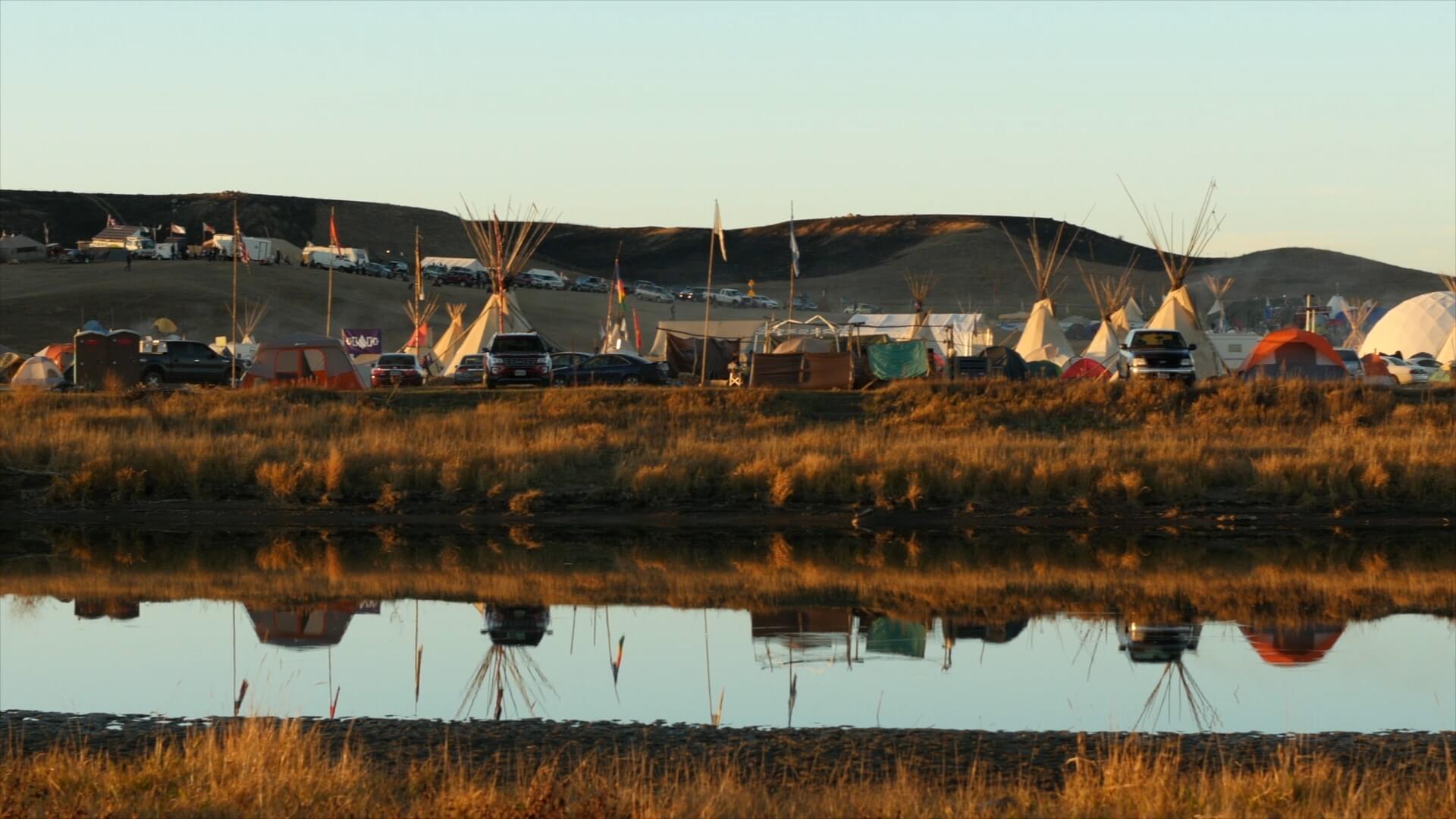In the spring of 2016, the indigenous communities of Standing Rock, North Dakota (US) made a global call to defend the water and ecosystems of their ancestral land that were threatened by the construction of an oil pipeline. Their struggle―which continues to this day―rallied thousands of individuals and indigenous tribes in the region, and received the support of millions around the world, through an organized digital campaign.
In his film Dislocation Blues, Sky Hopinka creates an incomplete and imperfect portrait of Standing Rock, which negates the inaccurate reports and representations influenced by a white gaze. The filmmaker observes the events taking place around him, looks on optimistically at the landscape before him, converses with other people in the area, and revisits their feelings at Standing Rock.
The film takes us back to the aftermath of these events, as we watch, on a computer screen, Cleo Keahna nostalgically and emotionally recounting their experience from Standing Rock, when their body had stopped being a source of anguish, when “me”―by virtue of the solidarity movement―had turned into “us”. “We all seemed to have the same dreams, the same pieces. Our stories were different but seemed to fit perfectly” Keahna says. “Outside the camp, I wouldn’t be getting along with them, but here, they’re brother and sister, one big family. […] They all want the same thing I want to happen,” we hear Terry Running Wild narrating, his voice coming through the camp’s soundscape, as the camera wanders around Standing Rock. The indigenous populations in the area, known as the Sioux, belong to the Dakota and Lakota nations, two words meaning “friend” or “ally.” The people who gathered on their ancestral land became part of the same cause, the same vision. That is why, as Cleo Keahna says, this is a story “that has to be told by everyone, by multiple people.”
Alongside the two narrators, Hopinka’s quiet cinematic narrative explores the potential of collective resistance and community organising, as well as the boundless prospects of a liberated indigenous cinema. The filmmaker is himself a member of the Ho-Chunk Nation (People of the Sacred Voice) of Wisconsin and of the Luiseño tribe (People of the West) of the Pechanga region. Hopinka’s voice weaves his voice in with that of others, becoming part of a vast mosaic. In Dislocation Blues’ non-linear narrative, the alternating voices may denounce and reveal self-doubts, resist and forget, sing together or clash with each other, but they are never silenced. It is exactly here that the characteristic virtuosity of Hopinka’s visual narratives lies: they are both personal, generous and political.
What emerges from Hopinka’s work is illustrated best by the words of Leoyla Cowboy, an activist fighting for the rights of Standing Rock’s indigenous population: “What’s been really great and a blessing is, being an indigenous woman, learning how to maneuver the legal system,”. Hopinka manages to distance himself from the dominant narrative, avoiding dogmas, monologues, and omissions, while, at the same time, refusing to be trapped in a “magical, rose-colored nostalgia.” Returning to Standing Rock, he once again gazes at the vast horizon of possibilities stretching out before him.
Numerous flags of nations, races, and solidarity groups flutter in the background. People gather around the lake and nearby hills, with their tents, makeshift houses, motorhomes, trucks, banners, and bodies. They demand, they pray, rest and sing. They are not only resisting rampant ecocide, but also renegotiating their own forced identity, the way their life is organised. There, in the middle of nowhere, they no longer feel alone or alienated.












